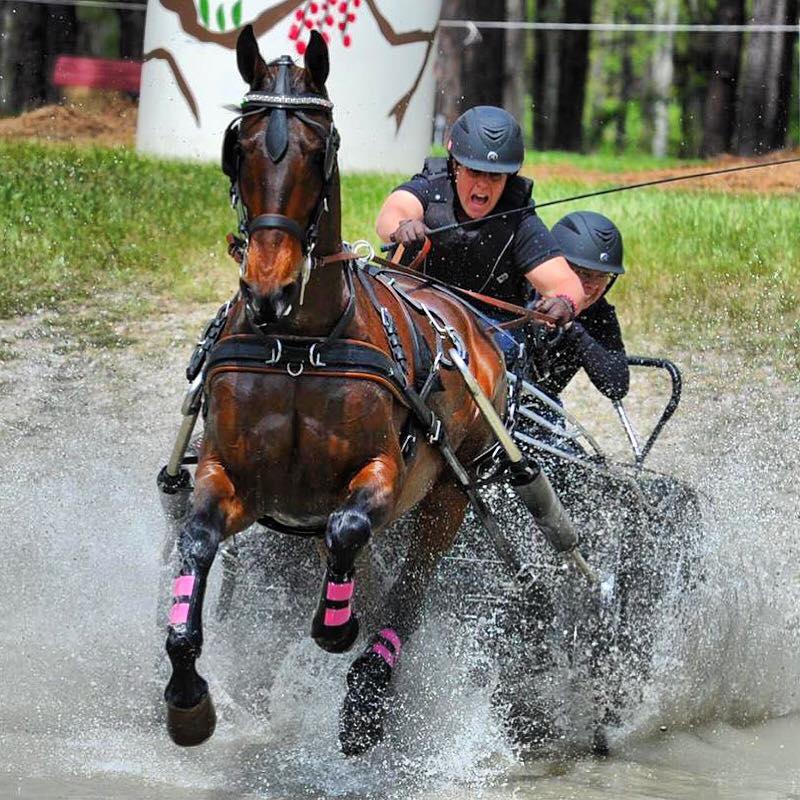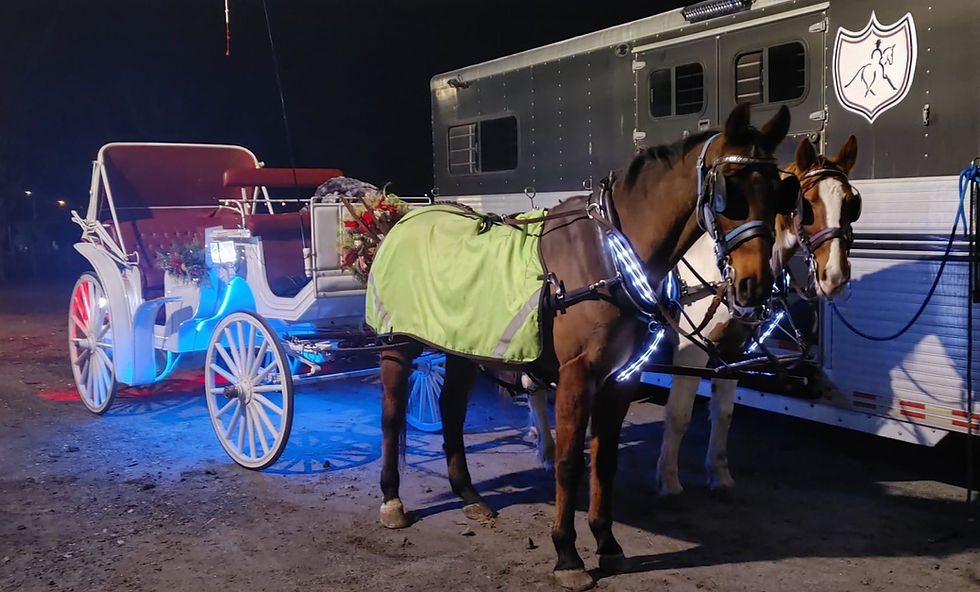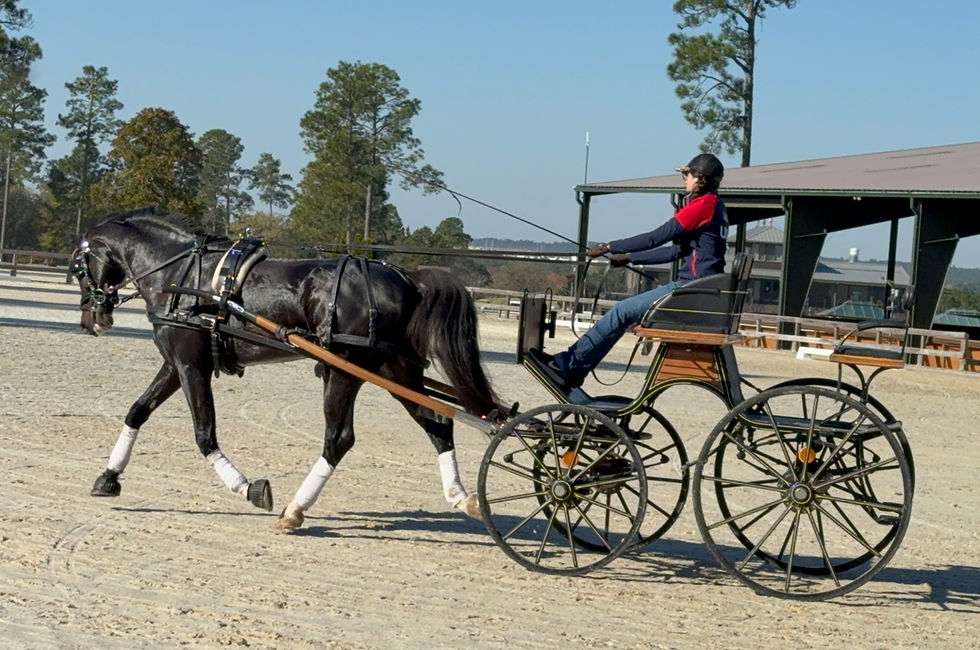Shoeing the Driving Horse
- jess3152

- Feb 7, 2022
- 3 min read

I must preface this blog post with the fact my farrier won’t be impressed with the picture I chose to grab your attention… but you clicked to read more, right?
Stuff happens. Shoes come off. Some horses are harder on shoes than others. This mare in the picture above is so hard on her hind shoes that I’ve actually had a shoe sheer off in half as I trotted her down the road. That was when I learned about drilltech. And we’ll get to that here in a minute.
Does my horse need shoes to drive?
This question has a lot of variables. Does your horse naturally have strong feet? Does he get bruised or sore walking on gravel? How fast are you driving and on what kind of surface how often?
My personal opinion is that I don’t go to work without my shoes on. I lazy around the house all day and will even venture to the chicken coop with no shoes on, but when I’m going to work (in my barn, because that is where my full time job is as a trainer/coachman) I put my shoes on. I use shoes that support my feet and help me get my job done.
That is how I look at my horses… If they have a job to do, they deserve to have shoes to support their feet like I do. That’s my opinion, but I’ve managed to keep some pretty sound horses working on pavement and all kinds of terrains for 16+ years….
Are there differences between riding shoes and driving shoes?
Yes and no. If you’re driving on grass mostly, you probably don’t even need shoes and if you do, you probably just need a regular flat steel shoe.
But how many of us have the luxury of always trotting on grass? Because even some sandy ground or bare dirt is going to give you the need for a little extra stability of the foot and grip on the ground.
I prefer as a basic start to use a steel shoe with drive in road studs in the heels. Drive in studs are permanent little studs at the heel to give a little extra traction when you hit the gravel, dirt patch, or some pavement in your work. I find driving horses can slip quite easily compared to riding horses, especially behind, and the little extra grip makes a big difference with minimal impact to the leg. These shoes can also be drilled and tapped for screw in studs that you can add to the shoe for competition or particularly heavy work where you need a little “extra.”
My horses work on gravel roads and pavement 90% of the time. They are big horses and we drive lots of hours every day. I can wear out a steel shoe in less than 2 weeks with my mare that removed her hind shoe in the picture above…..
My horses get the big guns, I learned about from the Amish….. Drilltech.
Drilltech is as strong, if not stronger, than borrium (frequently used on fox hunters), and the holes of the shoe will wear out before the shoe will even begin to wear out, even with use on pavement.

The disadvantage of these shoes is concussion…. You can’t just put them on and go. You need to give your horse’s body and bones some time to adapt to the grip. The body does adapt. Horses that work in these kinds of shoes and on pavement regularly are just as sound as horses that never see pavement and heavy gripped shoes -as long as you’ve built them up to it. You can’t just start going 2 hours down the road everyday out of the blue. The body needs long, slow, introduction. And also, there’s another set back…. the turnout. If you have a kicker, these can do serious damage.
All of my driving horses go in drilltech shoes and for that reason they are meticulously separated into their private groups and are never, ever, turned out with or close to a client’s horse. So, drilltech comes with maintenance, but if you’re going to drive long hours and on a lot of pavement, these are the big guns.
Leave me a comment on what kinds of shoes you use and like for the work you do…. Perhaps you’re even a boot user? That’s a topic for another blog post!
Thanks for reading!




Comments